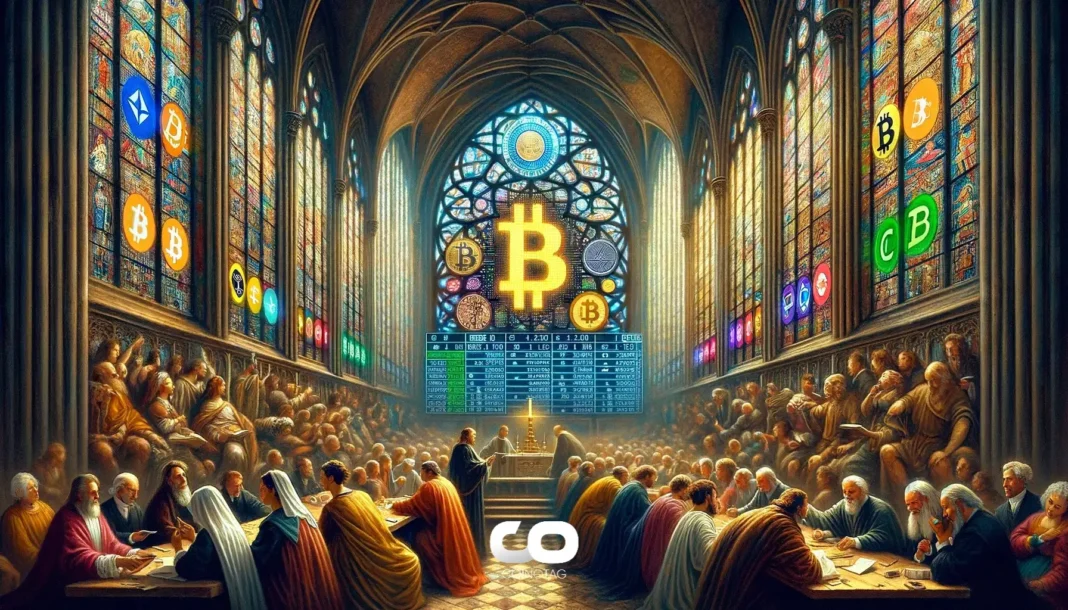-
Consensys CEO Joseph Lubin envisions Ethereum as a transformative force poised to redefine global finance by leveraging blockchain technology.
-
Institutional adoption and recent network upgrades are accelerating Ethereum’s prominence within the evolving digital asset ecosystem.
-
According to COINOTAG, Lubin emphasized, “What the internet did for information, Ethereum does for value,” highlighting its foundational role in future financial infrastructure.
Explore how Ethereum’s technological advances and growing institutional interest position it as a key player in global finance and blockchain innovation.
Joseph Lubin’s Vision: Ethereum as the Backbone of Global Finance
Joseph Lubin, CEO of Consensys, recently articulated a compelling vision for Ethereum to become the cornerstone of the global financial system. He envisions Ethereum not simply as a cryptocurrency but as a comprehensive platform capable of transforming financial coordination and security worldwide. Lubin suggests that Ethereum’s blockchain infrastructure could significantly reduce reliance on centralized financial institutions by embedding trust directly into its protocol. This paradigm shift could foster greater transparency and efficiency across diverse financial applications, from decentralized finance (DeFi) to enterprise-grade smart contracts.
Institutional Momentum and Market Implications
The growing institutional interest in Ethereum underscores its expanding market presence. Corporations such as SharpLink are strategically integrating Ethereum-based solutions into their treasury operations, signaling confidence in the network’s long-term viability. These developments reflect a broader trend where institutional investors are increasingly recognizing Ethereum’s potential to support complex financial instruments and decentralized applications. Market analysts note that such adoption could catalyze Ethereum’s ascendancy in the digital asset hierarchy, challenging Bitcoin’s historical dominance.
Technological Enhancements Driving Ethereum’s Competitiveness
Ethereum’s recent Pectra upgrade marks a significant milestone in its ongoing evolution. Key improvements include enhanced scalability, greater staking flexibility, and the introduction of account abstraction features. These technical advancements address critical network limitations, enabling faster transaction throughput and more versatile user interactions. By improving infrastructure robustness and user experience, Ethereum is better positioned to meet the demands of institutional participants and retail users alike. The upgrade also aligns with investor expectations for a scalable and secure blockchain capable of supporting next-generation financial applications.
Strategic Outlook: Ethereum’s Role in the Future Financial Ecosystem
Looking ahead, Ethereum’s trajectory suggests a growing role as a foundational platform for decentralized finance and beyond. Lubin’s assertion that Ethereum “does for value what the internet did for information” encapsulates the network’s ambition to embed trust and programmability at the core of financial transactions. As regulatory frameworks mature and institutional adoption deepens, Ethereum’s ecosystem is likely to expand, fostering innovation across asset tokenization, decentralized governance, and cross-border payments. Stakeholders are encouraged to monitor upcoming protocol upgrades and ecosystem partnerships that could further solidify Ethereum’s market position.
Conclusion
Ethereum’s future as envisioned by Consensys CEO Joseph Lubin is one of profound financial transformation, driven by robust technological upgrades and increasing institutional engagement. The network’s ability to embed trust and facilitate complex financial operations positions it as a pivotal player in the global blockchain landscape. As Ethereum continues to evolve, it offers a compelling alternative to traditional financial systems, promising enhanced transparency, security, and efficiency. Investors and industry participants should remain attentive to Ethereum’s development trajectory as it shapes the future of decentralized finance.





